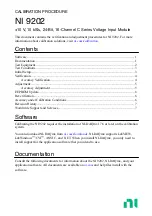
Model G0895 (Mfd. Since 01/20)
-7-
The following is a list of common definitions, terms and phrases used throughout this manual as they relate
to this CNC router and woodworking in general. Become familiar with these terms for assembling, adjusting
or operating this machine. Your safety is VERY important to us at Grizzly!
Glossary Of Terms
Axis:
Direction of movement. On a three-axis mill-
ing machine, axes are typically X (left-right),
Y (front-back) & Z (up-down). Axis directions
are described as positive or negative. On this
machine, positive movement is defined as
movement towards the rear (Y), right (X), and
top (Z) of the working envelope.
Ball End (Ball Nose):
A cutting tool that has a
rounded cutting arc, where the arc diameter
is equal to the cutting diameter.
Ball Screw:
Drive system component. The ball
screw is rotated by the servo motor and pro-
vides the means for moving the gantry and
spindle along the axes.
Bed:
The bed of the CNC consists of a welded
steel frame, an extruded aluminum table top,
and a tongue-and-groove table top with inte-
grated T-slots.
CAD:
Computer aided design. CAD software is
used to create a digital model of a project.
CAM:
Computer aided manufacturing. CAM soft-
ware converts CAD models into a toolpath
defined by G-code that CNC machines can
interpret.
Chip Load:
Chip load is the measure of the thick-
ness of chips a tool will cut. Chip load is equal
to: Feed Rate ÷ (Spindle Speed X Number of
Flutes).
CNC:
Computer numerical control. Manufacturing
controlled by a computer via coded instructions.
Climb Cut:
Cut that occurs when the rotation of
the cutter moves in same direction as the
workpiece.
Collet:
Metal collar that holds the cut-
ting tool in place within a spindle nut.
Conventional Cut:
Cut that occurs when the
rotation of the cutter moves in opposite direc-
tion as the workpiece.
Compression Bit:
A cutting tool with a combi-
nation of up and down shear cutting edges.
Typically used for cutting laminate material to
prevent tear-out on both sides of the sheet.
Down-Cut Bit:
A cutting tool with edges that
carve downward on the face of the tool-
path. Reduces the potential for tear-out, but
requires a slower feed rate.
Dust Shoe:
An accessory that channels dust and
debris directly from the cutting tool through
an attached dust collection system.
Dwell: Part of an operation in which axis move-
ment stops while the spindle is running and
the cutter is within the workpiece. Dwells
should be used rarely as they can lead to tool
and workpiece damage.
End Mill:
A cutting tool with a straight end, typi-
cally with spiral flute(s). It creates a channel
with a flat bottom perpendicular to the sides.
Feed Rate:
The speed at which the cutting tool
moves along a workpiece.
Flute Length:
The length of the cutting portion on
a router bit or cutting tool.
Flutes:
The cutting edges or inserts of a router bit
or cutting tool.
Finish Cut:
A 3D toolpath that reduces or elimi-
nates the irregular contours left by a rough
cut.
Form Bit:
A bit that carves a standard profile such
as a roundover, ogee, or similar contour.
Summary of Contents for G0895
Page 60: ......










































